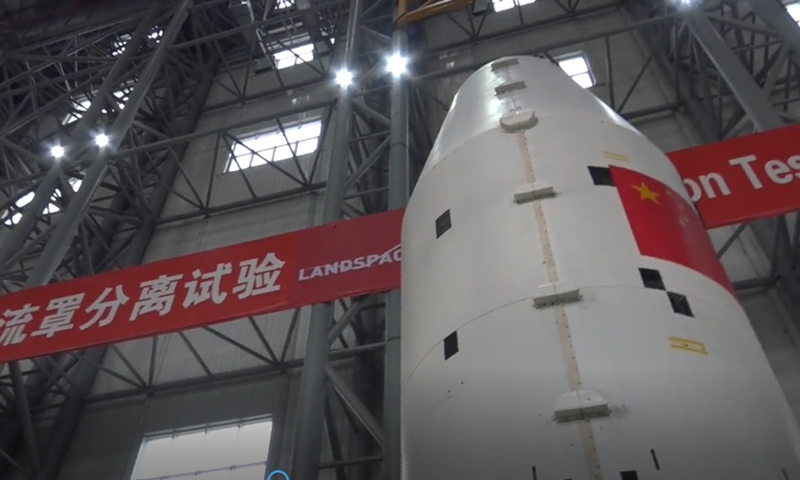
A view of the fairing of ZQ-2 rocket. Photo: Courtesy of LandSpace
Chinese private rocket firm LandSpace confirmed with the Global Times Friday that it has accomplished a payload fairing separation test for its self-developed ZQ-2 liquid-propellant carrier rocket, a step toward the maiden liftoff for the much-expected rocket.
The test verifies the working performance, sequence and the whole process of the entire separation action of the fairing. The parameters of the separation process meet the design requirements, which proves the level of the separation design and interface coordination, the company said.
Located at the forefront of the launch vehicle, the fairing plays a rectifying role during the vehicle's high-speed flight in the atmosphere, while protecting the payload from harmful effects such as aerodynamic forces, aerodynamic heat and acoustic vibration.
With a diameter of 3.35 meters and a total length of 8.24 meters, the fairing of the ZQ-2 rocket is so far the largest one in the domestic private space sector, filling the gap in the large-size fairing in the sector.
The successful test has brought the start-up's rocket launch plan closer to reality. The ZQ-2 is the largest liquid oxygen methane launch vehicle product developed and produced by a private firm, and it will be the first rocket of its kind in China to be sent into space. Previous launch vehicles were solid-propellant carriers.
LandSpace told the Global Times on Friday that the rocket will be launched this year, but no detailed timetable has been set.
Apart from the fairing test, the Beijing-based firm has overcome difficulties in the design, manufacturing and test verification for the large-caliber cryogenic liquid transportation pipeline for the ZQ-2 and has completed a low-temperature vibration test of the rocket's first-stage liquid oxygen transportation pipeline. The test run of the liquid oxygen methane needle-bolt injector has also been successful, indicating that the firm has mastered the core technology of depth variable thrust for the liquid oxygen methane engine.
Global Times
